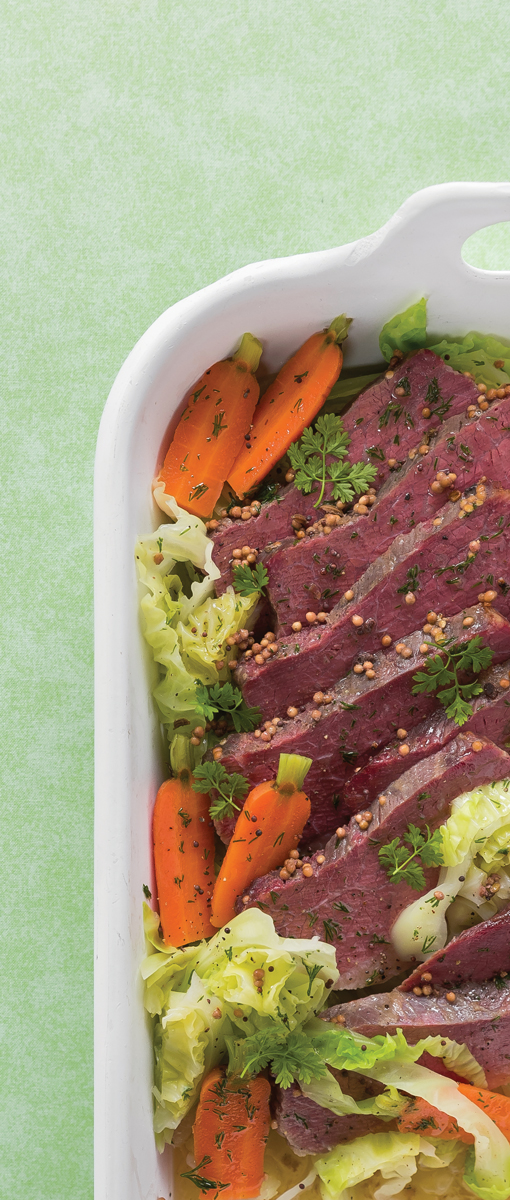Corned: to preserve meat with salt. The term comes from an old word for “kernel,” because the salt people used resembled kernels of wheat. It’s been in the Oxford English Dictionary since 888 A.D. But corned beef, the highlight of almost any St. Patrick’s Day celebration in America, isn’t the national dish of Ireland; on March 17 you won’t find it on dinner tables in Dublin. So how did it become synonymous with the Emerald Isle?
 Let’s start at the beginning. In ancient Ireland, cows were a sacred symbol of wealth. They weren’t part of the average Irish diet. Instead, people ate pigs. Then England conquered most of the country in the 12th century, bringing British beef-eating culture with them. Low salt taxes there turned Ireland into the center of the empire’s corned beef trade in the 18th and 19th centuries.
Let’s start at the beginning. In ancient Ireland, cows were a sacred symbol of wealth. They weren’t part of the average Irish diet. Instead, people ate pigs. Then England conquered most of the country in the 12th century, bringing British beef-eating culture with them. Low salt taxes there turned Ireland into the center of the empire’s corned beef trade in the 18th and 19th centuries.
But the Irish people producing all that corned beef couldn’t afford it themselves because of oppressive English laws. If the Irish could afford any meat at all, it was salted pork or boiled bacon. More often, they just ate potatoes.
Until 1845, when a potato blight broke out in Ireland and the Great Famine began. About a million Irish died from starvation, and another million immigrated to the U.S. Most of them settled in New York City, alongside another persecuted group that had recently lost a homeland: Jews.
So when the first generation of Irish-Americans began yearning for familiar tastes of home, pork wasn’t easy to come by. What they found instead was corned beef brisket, purchased from the butchers of their kosher neighbors. Irish immigrants soon adopted the Eastern European method of meat brining they encountered in New York, and along with their beloved potato and cabbage (the least expensive vegetable of the time) the dish became a staple for religious feast day meals, including, most famously, St. Patrick’s Day.
Corned Beef and Cabbage
3 lb. corned beef brisket
(prepacked and available
in the Meat & Seafood
department)
1 1/2 lbs. green cabbage, cut
into 6 wedges
3/4 lbs. carrots, peeled and cut
into 2″ pieces
1 small yellow onion, peeled
and quartered
1 large spring of fresh thyme
- Place brisket in a large pot and cover with an inch of water.
Set over high heat and bring to a boil. Reduce heat to low, cover and simmer gently for 2 hours. - Add cabbage, carrots, onion and thyme to pot; continue to cook until brisket is fork tender, approximately 1 1/2 hours more. Remove brisket from pot and slice across the grain.
- On a platter, arrange brisket and vegetables with a little of the cooking liquid. Serve with mashed or roasted potatoes.